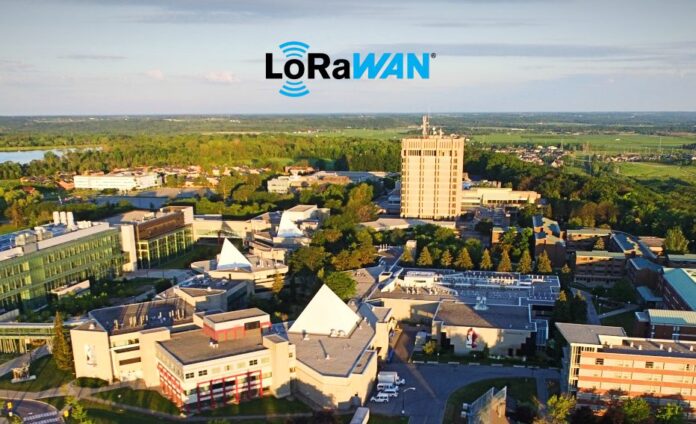Pforzheim University in Germany has expanded its LoRaWAN network, originally deployed for research purposes at the university faculty of technology, for usage by smart city and Industry 4.0 applications, as well as in industrial 5G crossover work with another university in the country’s south.
These include monitoring the irrigation of trees in the city area, as part of a pilot that has been active with the city authority since 2000. Pforzheim University, a leading university for applied science in Germany, located in the southwest of the country, on the border with the Black Forest, has said its LoRaWAN network will be extended also with the deployment of LoRaWAN gateways to connect “places where it was previously not possible”.
It has cited IoT sensing infrastructure in “such places [as] extensive natural areas, [like] forests, [as well as for monitoring] roads to old buildings”. The university has installed LoRaWAN-based IoT gateways on the Dobel Water Tower, a former water tower, now observation tower, in Dobel, in the state of Baden-Württemberg, as well as on the nearby Black Forest campus in Freudenstadt, owned by the University of Stuttgart.
The university’s LoRaWAN setup is also already being used as part of a research project with private firm Straubenhardt-based OTEC Präzisionsfinish, a technology leader in the field of mass finishing machines, which develops and manufactures machine concepts for surface finishing for metallic workpieces. The company is using LoRaWAN to monitor the moisture values of granules in large storage areas.
Mike Barth, head of mechatronic system development at Pforzheim University, said: “The advantages of LoRaWAN lie in the low energy consumption combined with long ranges. This means that we can also use the sensors in places where it was previously not possible.” The Dobel tower setup uses LoRaWAN technology to determine the levels of nearby rivers.
Barth said: “Data can be useful in connection with flood warnings or imminent drought or the risk of forest fires. We have ideal reception conditions at one of the highest points in the northern Black Forest.” The work at the Black Forest campus is part of an industrial network benchmarking project, which will run tests on low-power wide-area (LPWA) LoRaWAN alongside practical research into industrial 5G, offering opposite Industry 4.0 capabilities.
He said: “In cooperative research, we aim to compare different technologies for transmitting data in connection with the structural condition of buildings. We want to develop benchmarks in this way in order to further advance the networking of machines – and thus topics such as monitoring and optimisation or predictive maintenance within industrial companies. [The question is, for] which use cases is 5G [most] suitable [and] for which is LoRaWAN best?”
The new research project with OTEC Präzisionsfinish, already underway, is to use LoRaWAN to monitor the moisture values of granules in large storage areas. “The granules are used here for machines in connection with vibratory finishing and must not get wet,” said Barth. Students of his master’s course, meanwhile, are contributing to the LoRaWAN research network as part of their project work to develop an IoT dashboard for smart-city data.
The city is plugged into the student project. A statement said: “The young engineers developed a traffic light system that meets the needs of urban tree care illustrated by a yellow, green or red signal. Among other things, the students also integrated an irrigation forecast through networking with weather data.” It further stated: “[The university] wants to use the data from Pforzheim, Dobel, and Freudenstadt for research AI with a focus on machine learning.”

